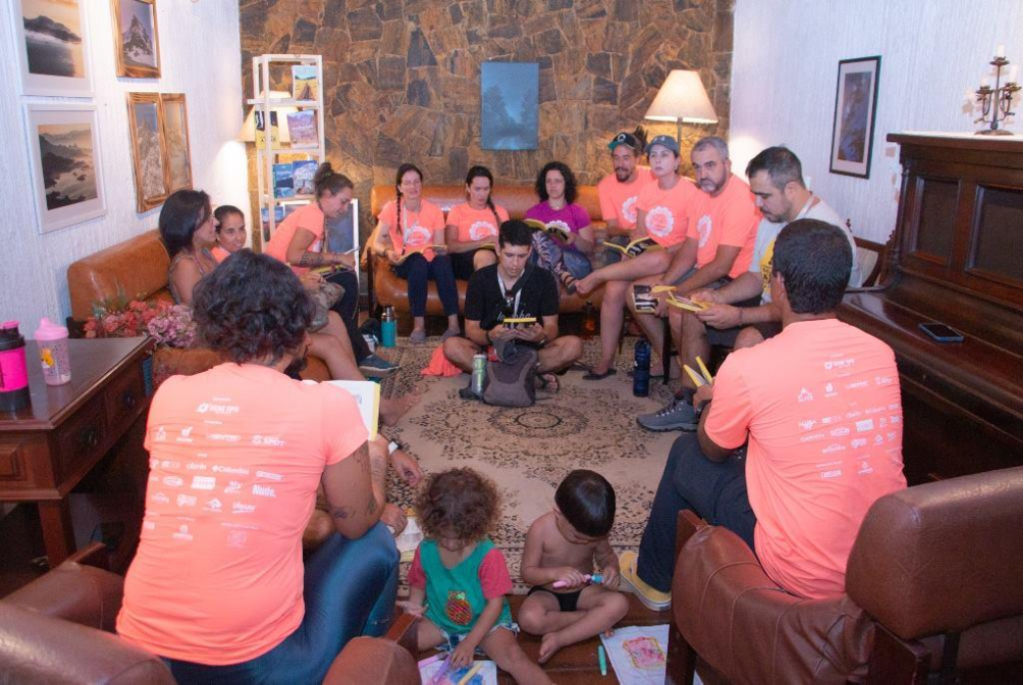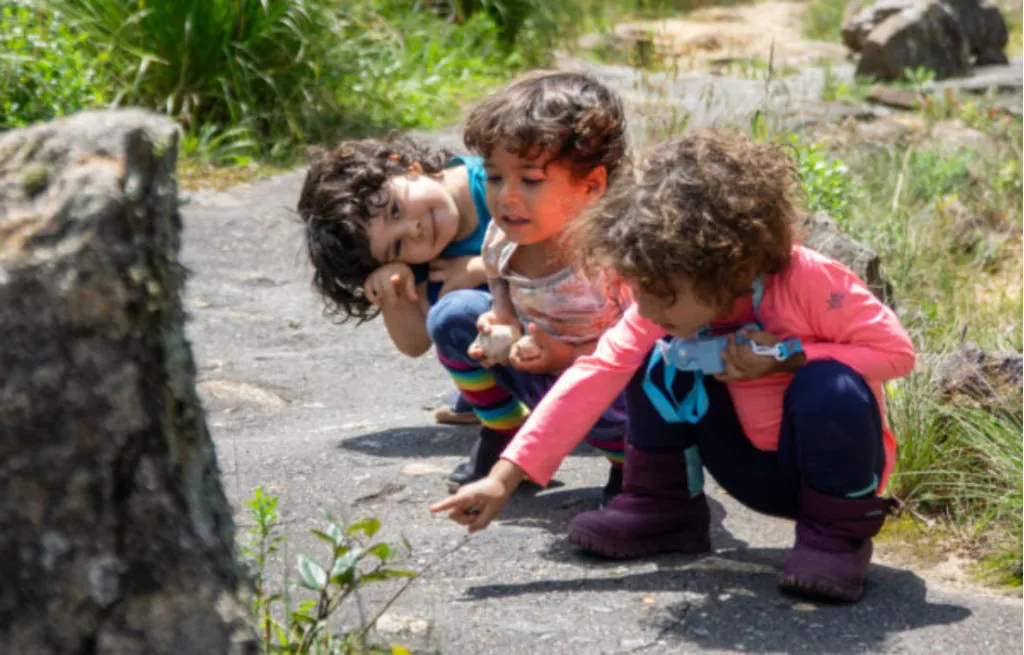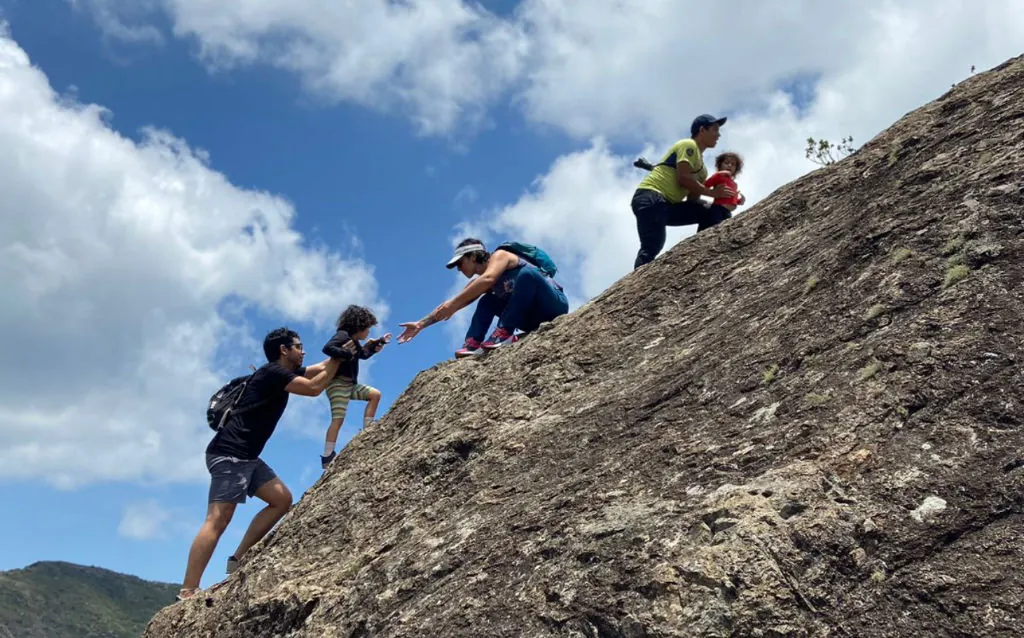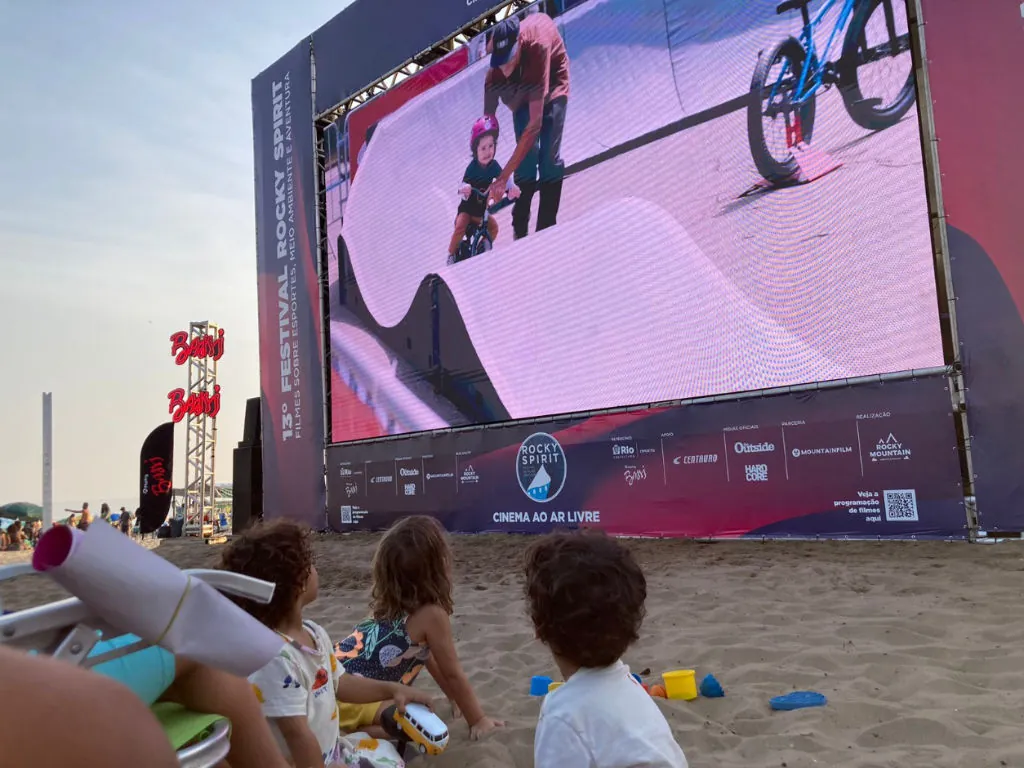Outdoor activities are recreational and/or sports practices carried out in the open air. It is a broad concept that considers forests, mountains, rivers, beaches, and parks as natural environments. These activities can range from simple walks to more complex sports such as hiking, trekking, mountain running, climbing, cycling, among others. The term “outdoor” highlights the fact that these adventures take place in places that are sometimes remote, providing a direct connection with nature and often involving physical and mental challenges.
In recent decades, these activities have seen exponential growth in Brazil, becoming popular for promoting a healthy lifestyle, encouraging contact with nature, and overcoming personal challenges. This development of the “outdoor” culture can be clearly observed in the success of cultural, scientific, and sports events, as well as in the growing number of enthusiasts in the various activities.

Jornada Científica e Cultural do Montanhismo 2023 – Photo: Taísa Maar
In this context, in 2024 we attended as listeners the roundtable *Floresta em Família*, at the Jornada Científica e Cultural do Montanhismo. This activity brought together people who work with or practice outdoor family activities, moderated by Pedro Lacaz Amaral and Fernanda May, to discuss why children are not spending time in nature. Upon realizing that the pedagogical project at our daughter’s school attracted people interested in taking children to nature, we began holding monthly meetings to hike together as families, creating the group Mini Montanhistas.
Childhood culture
The term “childhood culture” can be understood as a set of practices, values, symbols, languages, games, stories, and forms of expression unique to children. It is the way children perceive, interpret, and interact with the world around them, creating and recreating their own cultures within the contexts in which they live.
This culture is marked by creativity, imagination, and the ability of children to give meaning to their experiences and environments. It encompasses everything children do, think, and share, such as games, music, play, narratives, and even how they organize their time and space.
In the educational context, childhood culture is recognized as a central element in the debate on pedagogical processes, particularly in early childhood education. This approach highlights the importance of respecting and valuing this culture in order to enable truly meaningful teaching that promotes the child’s holistic development.

Children observing ants at Itatiaia National Park – Personal Archive
Educator Ana Claudia Leite, from Instituto Alana, highlights three essential aspects of childhood culture: i) what children produce; ii) the cultural heritage of childhood; and iii) what adults produce for children. Children produce their own culture and express it in multiple ways. Games and traditions passed down from generation to generation make up the heritage of childhood. Finally, music, films, and all artistic expressions created with children in mind complete these aspects.
The “outdoor” culture
In Brazil, outdoor culture is promoted through various initiatives that have contributed to the exponential growth of adventure sports practices since the 1990s. This culture emerges from the dissemination of concepts, ideas, and values cultivated by adventure activity enthusiasts.
As examples of public policies that strengthen and encourage this development, we can highlight the consolidation of National Parks and Conservation Areas. Brazil has a vast network of national, state, and other conservation areas that offer infrastructure and opportunities for outdoor activities. These spaces are promoted by institutions such as ICMBio (Instituto Chico Mendes de Conservação da Biodiversidade) and state environmental agencies, which organize events, campaigns, and visitation programs.

Families walking at Itatiaia National Park – Personal Archive
Cultural events play a fundamental role in fostering the “outdoor” culture. Scientific production activities such as the Congresso Brasileiro de Atividades de Aventura and the Jornada Científica e Cultural do Montanhismo encourage academic production. Film festivals such as Rocky Spirit and Rio Mountain Festival stimulate cultural production. Likewise, events such as the Mountain Festival and Jornada Outdoor contribute to the dissemination of concepts and values shared by outdoor enthusiasts.
Sports competitions and attendance at national/state parks are a good indicator of public interest. Analyzing the increase in park visitation and registrations for outdoor sports competitions, such as mountain running, orienteering, mountain bike marathons, climbing, and others, confirms the growth of enthusiasts.
Family adventures and the socioemotional development of children
In the field of human development, there is a debate about education, categorizing it into three types: i) formal education – developed in educational institutions; ii) informal education – characterized by; and iii) non-formal education – which occurs throughout life in the multiple interactions individuals have. Some activities fall at the intersection of these categories, but this is not a problem for what we are presenting here. The important thing is to keep in mind that education happens at home, at the dentist’s office, in the playground, and at school.
When reflecting on early childhood education, the role of the family is fundamental to the socioemotional development of children. However, it is evident that the characteristics of today’s society place demands on adults that challenge the time they can dedicate to their children.
In this sense, observing the various families we meet on the trails—whether in “Mini Montanhistas” or in our wanderings through the mountains of the world—we conducted a study aimed at analyzing the impact of family adventures on creating quality time and developing socioemotional skills in children.

Families helping each other on the trail – Personal Archive
The results indicate that family adventures maximize quality time, strengthen family bonds, and provide a setting for socioemotional development. Through an ethnographic approach, with semi-structured interviews, we sought to talk to children and understand their perspective. Statements emerged such as: “it’s so cool here, every time I start to talk, dad is already looking at me.” Among adults, comments about disconnection—in the sense of putting the phone aside—were frequent and linked to improvements in the quality of interpersonal relationships.
Based on the research, we envisioned producing a film portraying the child’s point of view during treks such as Petro-Tere in Serra dos Órgãos and trails in Itatiaia National Park. For its screening at Rocky Spirit, on the sands of Ipanema, we invited several children from Mini Montanhistas and saw their excitement at seeing possibilities within their reach on the big screen. This resonates with childhood culture and impacts the future of outdoor culture.

Rocky Spirit 2023 – Ipanema/RJ
More than that, by giving children the spotlight, we identified their potential to be spokespersons for other children. The bright eyes and engagement during the screening gave us the certainty that not only outdoor adventures but also cultural works about nature sports are excellent strategies for building lifelong bonds.
Continuing with this immersion in outdoor culture while respecting the premises of childhood culture, we signed up the whole family for La Mision, a mountain race in the Serra Fina region. Beyond our little one’s involvement in the training cycle, we organized meetups with acquaintances, other children, and created plenty of space for play. After all, children’s cultural production revolves around play. To complete the experience and contribute to this process, the competition featured a live lizard mascot. Guaranteed success!
From the experiences we’ve lived, seen, and heard, we identified that harmony with nature enhances the environment where childhood flourishes. From the simplicity of games, to climbing and outdoor running, and back to books and films, childhood culture manifests itself—whether in family traditions, spontaneous creations, or productions designed by adults. Outdoors, children explore, create, and learn, connecting with an energy that shapes them, enriches the present moments, and prepares them for the world.
This post is also available in: Português (Portuguese (Brazil)) Español (Spanish)
